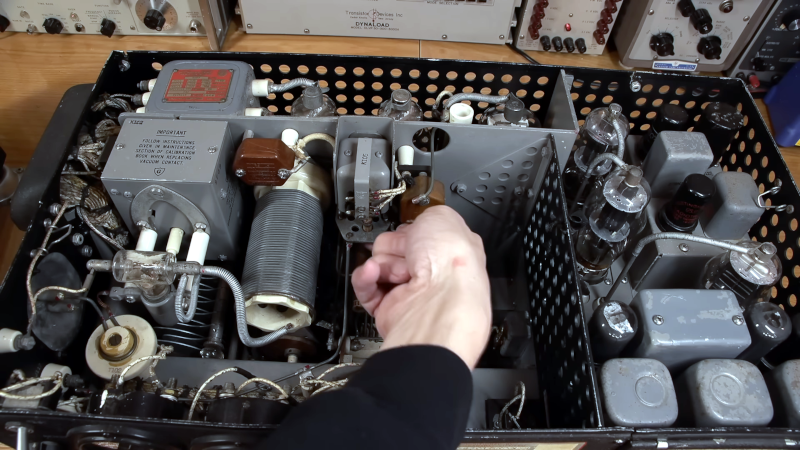[Mr. Carlson] has been restoring vintage military radios, and as part of his quest, he received an ART-13 transmitter. Before he opened the shipping box, he turned on the camera, and we get to watch from the very start in the video below. These transmitters were originally made by Collins for the Navy with an Army Air Corps variant made by Stewart-Warner. Even the Russians made a copy, presumably by studying salvaged units from crashed B-29s.
The transmitter puts out 100 watts at frequencies up to 18.1 MHz. The tubes needed a plate supply, and so, like many radios of the era, this one used a dynamotor. Think of it as a motor running at one voltage and turning a generator that produces a (usually) higher voltage. If you ever used a radio with one, you know you didn’t need an “on the air” sign — the whine of the thing spinning would let everyone know you had the key or microphone button pushed down. It’s an interesting piece of bygone tech that we’ve looked into previously.
The transmitter wasn’t in perfect shape, but we’ve seen worse. When the lid comes off, you can practically smell the old radio odor. There are tubes, coils, and even a vacuum relay, presumably for transmit/receive switching of the antenna. [Carlson] also tears open the dynamotor which is something you don’t see every day.















Cool. I bought a TCS receiver that was also built by Collins in WW2.
I have been watching Mr. Carlson and building his inventions which he is kind enough to share on Patreon. Truly informative gentleman and this should prove to be an excellent series.
Not from crashed B-29s. Remember that Soviet Russia was allied with the US in WWII. There were a couple of B-29s that for whatever reason didn’t have enough fuel to return to their bases, but were able to land at Soviet air bases. The Russians happily returned the airmen to their bases, but not the planes. One of these was disassembled and drawings made from it were used to build the TU-4 bomber. No doubt they also copied all of the electronics aboard as well.
Not just B-29’s but Lancaster bombers too – longer raids over the far east of Germany meant a refuelling landing in Russia.
However the Russian petrol wasn’t that great, and so on takeoff one of our Lancs didn’t quite clear the tree line at the end of the runway, and brought home a souvenir – half a pine tree in the bomb-aimers window.
The tree was extracted on landing and now resides above the hotel bar near the old airfield.
https://media-cdn.tripadvisor.com/media/photo-s/04/16/f5/6d/petwood-hotel.jpg